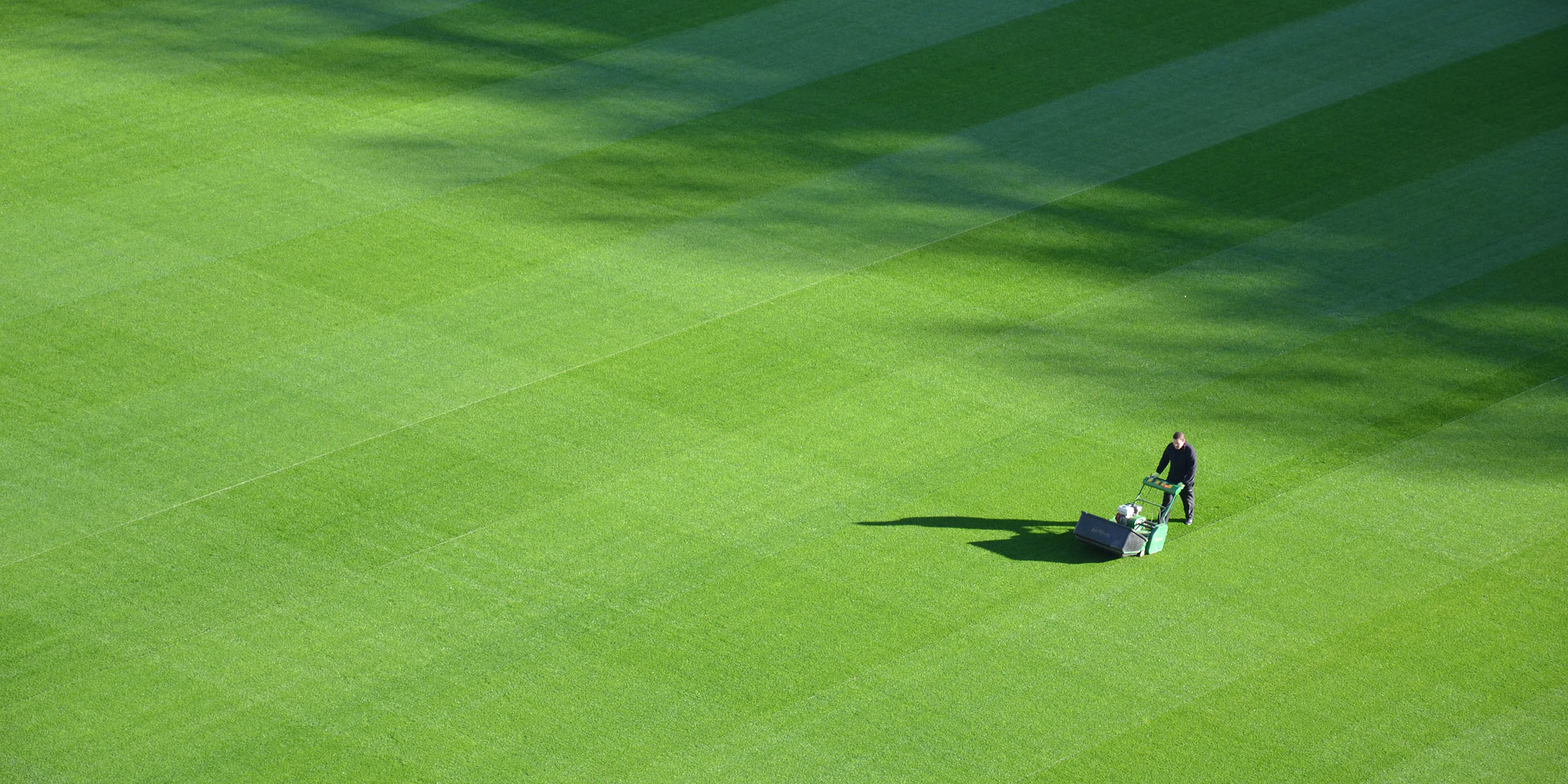Originally published 23 May 1994
It’s that time of the year and the crabgrass is waiting.
If there is an afterlife, and I end up you-know-where, the one thing I’m sure I’ll find is a lawn.
Not flames. Not red hot coals. Just a greensward stretching away to the horizon. An endless expanse of turf, choked with crabgrass and dandelions — and it’s my job to put it right.
Not devils with pitchforks, but devils with power mowers that fail to start, green plastic bags of clippings that burst their seams, leaf rakes that have lost their tines.
Perdition is an eternal Saturday morning tending grass.
Don’t get me wrong, I have little to complain about. The lawn assigned to my care is not much bigger than a living room carpet. But it’s big enough for me to know that a billiard-table smooth, lustrously green, uniformly mowed, weedless lawn was never meant for the neighborhoods of Paradise.
How did Americans get so hung up on the diabolical abomination called a lawn?
The mowed lawn is as uniquely American as softball, lemonade, and the Fourth of July. No other people on Earth have wished to surround themselves with a hair-shirt of grass, unless it is the British upper class, for whom an expanse of well-kept lawn is the botanical equivalent of looking down one’s nose at the neighbors.
The first mechanical lawn mower was invented by an Englishman, appropriately named Edwin Budding, in 1830. “Country gentlemen will find in using my machine an amusing, useful, and healthful exercise,” he wrote in his patent application. Presumably, most country gentleman hired someone from the lower classes to push the damn thing around.
For Americans, the lawn is a statement of rugged individualism and middle-class ascendancy. No need for a town common, village green, or public park: Every American wishes to possess his own piece of green, unshared with neighbors, unviolated even by the neighbor’s dog. Most astonishingly, Americans have insisted on taking this invention of moist, mild England to every region of our continent, including the frozen wastes of North Dakota, the tropics of South Florida, and the deserts of Nevada.
Yale University horticulturalists F. Herbert Bormann, Diana Balmori, and Gordon T. Geballe tell the story of America’s love affair with lawns in Redesigning the American Lawn: A Search for Environmental Harmony, published [in 1993] by Yale University Press. It is a story of seduction, debasement, and final damnation to a hell of wasted water, chemical herbicides, clippers, chippers, trimmers, and mowers. Add, too, the infernal grind of internal combustion engines disturbing the peace of weekend mornings.
Bormann et al make a distinction between what they call the “Freedom Lawn” and the “Industrial Lawn.”
The Freedom Lawn contains plants other than traditional lawn grasses such as rye grass and fescue. The seeds of dandelions, violets, bluets, spurrey, brown-eyed Susan, and other so-called weeds all allowed to take root, along with non-standard grasses such as quack grass, timothy, and crabgrass. All these co-exist quite nicely, and the homeowner is required only to give them an occasional mow.
The mix of plants in a Freedom Lawn is determined by the interaction between mowing and local ecology. The plants succeed without artificial intervention, and they tolerate a lot of stress. If the lawn goes brown for lack of water, well, one simply waits for reviving rain.
The Industrial Lawn, on the other hand, is composed exclusively of a few regulation grass species purchased at a lawn supply store. It is free of weeds and pests, mowed to a low, even height, and continuously green. It ignores local ecology and species diversity, and substitutes technology for natural processes.
Our authors say this of the Industrial Lawn: “It has the added virtue, at least in terms of the lawn care industry, of never being completely attainable. There is always some new and necessary bit of technology, some new finding on fertilizers, some modification of pesticides or new variety of grass required to move toward the ideal, or, in more competitive terms, to keep up with the neighbors.”
How did such a powerful ideal arise? The $25 billion-a-year turf-grass industry has exploited America’s paradoxical longing to be separate while wishing to fit in. We surround ourselves with a patch of personal turf, but do not want to appear different from our neighbors. The costs of an Industrial Lawn to the environment are forgotten in the race to have the most Astro-turfy yard on the block.
Anyone who feels afflicted by a lawn would do well to peruse the little book by Bormann, Balmori, and Geballe. It is handy to know why we want what we want, and the costs — to ourselves and the environment — of having it. The book is not a polemic. It lays out the pros and cons of various lawn care strategies, and even gives advice on how to create a good Industrial Lawn.
For myself, I’ve decided to let the crabgrass, plantain, and clover thrive, but hold the line on the dandelions. Not yet perfect Freedom, but at least a few Dantesque circles up from lawn hell to lawn purgatory.




My good friend has it figured out…his front yard looks like Fenway Park…his back yard looks like a landfill.